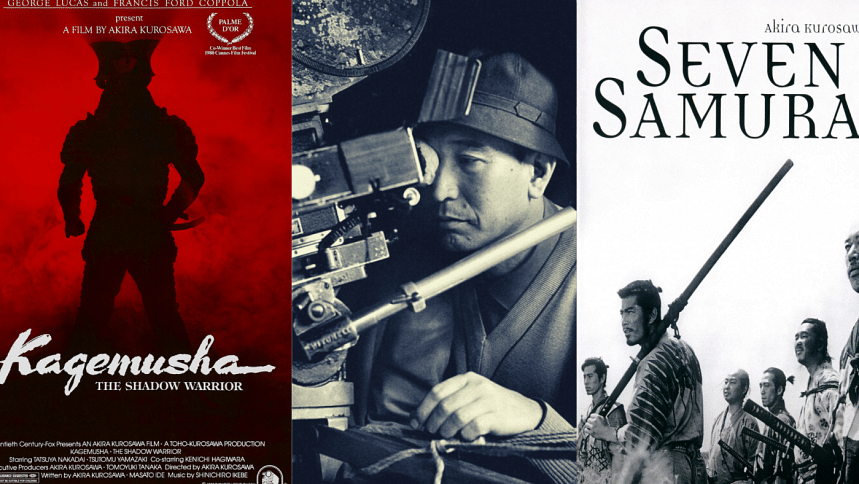Remembering the Samurai of Filmmaking, Akira Kurosawa

Today marks the 112th birthday of the enigmatic filmmaker, Akira Kurosawa. His love for films made him work prolifically, directing thirty films over the span of five decades.
Under the influence of his elder brother, Kurosawa began his career as a painter. However, he was eventually drawn to filmmaking, and started working as an assistant director. Soon Kurosawa turned to scriptwriting, and it was during the second World War that he made his directorial debut with the popular action film "Sanshiro Sugata".
Sadly, the then censor board stifled the release of his film. It would be much later, after the war, that he was able to work independently.
The 1948 movie "Drunken Angel" is considered his first major project, and it would also be the first time that Kurosawa experienced the freedom to express his thoughts and ideas through his work.
A man whose name is often associated with Kurosawa is Toshiro Mifune, an actor who is relatively obscure nowadays. Kurosawa cast Mifune as a gangster in "Drunken Angel". Even though he was not given the role of the protagonist, his on-screen performance was so electrifying that the audience focused solely on him.
This would mark the beginning of their collaboration, eventually ending with Mifune playing major roles in 15 of Kurosawa's films.
After winning over the Japanese audience, Kurosawa began conquering the cinephiles of the West. He made his international breakthrough with the film "Rashomon", in 1950. The script for the film was written by Shinobu Hashimoto, who would also work on several other projects with Kurosawa. The film received mixed reviews in Japan, particularly due to its unique style.
However, when it was submitted to the Venice Film Festival, the movie was received with unprecedented levels of enthusiasm. Not only did the film win the festival's top prize, it also introduced Western audiences to the decades-old tradition of Japanese filmmaking. As a result, the West finally began to appreciate Japanese films for its distinct style and storytelling.
Kurosawa's next films earned him a legendary status across the globe. "Ikiru" (1952), shows the tale of a bureaucrat dealing with terminal illness, who goes on a search for the meaning of life. The satirical approach of this film made it distinct in the history of cinema.
"Seven Samurai", released in 1954, is regarded as the best Japanese movie ever made. This was Kurosawa's first Samurai film, and he would continue to impress with this genre.
Unfortunately, the life of Akira Kurosawa was not at all a tale of just happiness. Instead, the 60's and 70's saw several failed projects from the filmmaker. Kurosawa, however, was adamant to continue working, despite the setbacks.
American director George Lucas, who revered Kurosawa, helped the Japanese filmmaker procure funds. This allowed Kurosawa to make the legendary film "Kagemusha", which went on to be a hit at the box office.
All good things come to an end, sadly, as one day Kurosawa slipped while working on a screenplay in 1995 and broke his spine. After that, he was forced to use a wheelchair, marking the end of his directorial career.
In Akira Kurosawa, not only do we find a creative heart as dramatic as his own films, but also a diligent worker who turned his vision into reality. His love for his own craft, and relentless nature inspired generations of filmmakers.

 For all latest news, follow The Daily Star's Google News channel.
For all latest news, follow The Daily Star's Google News channel. 







Comments